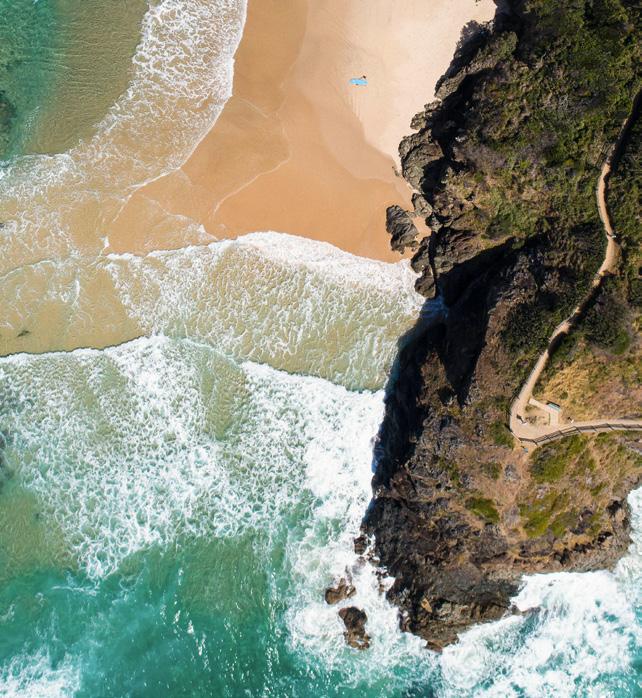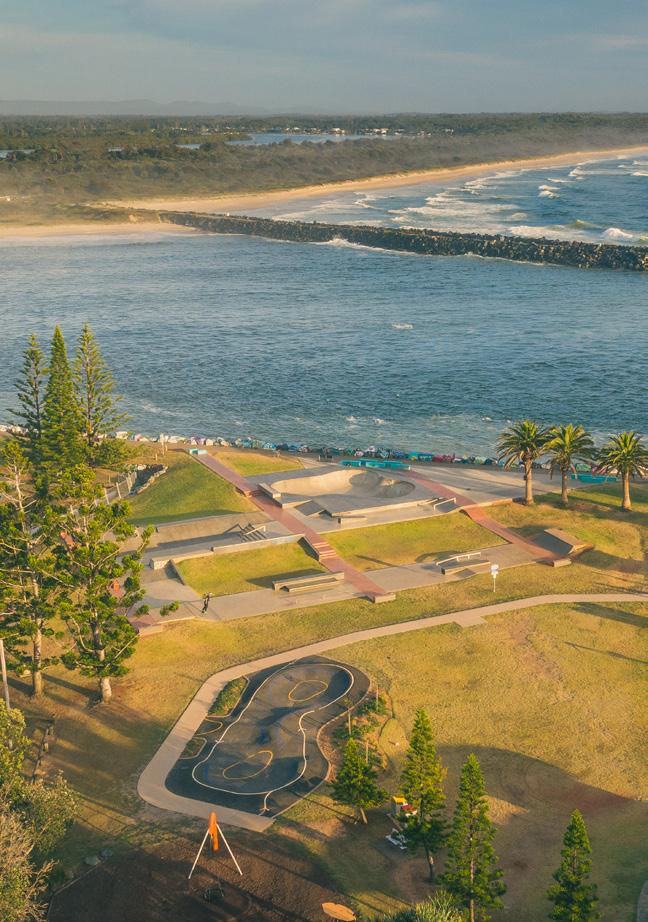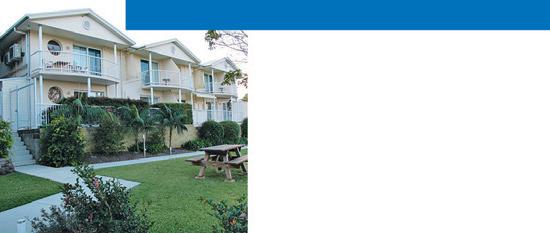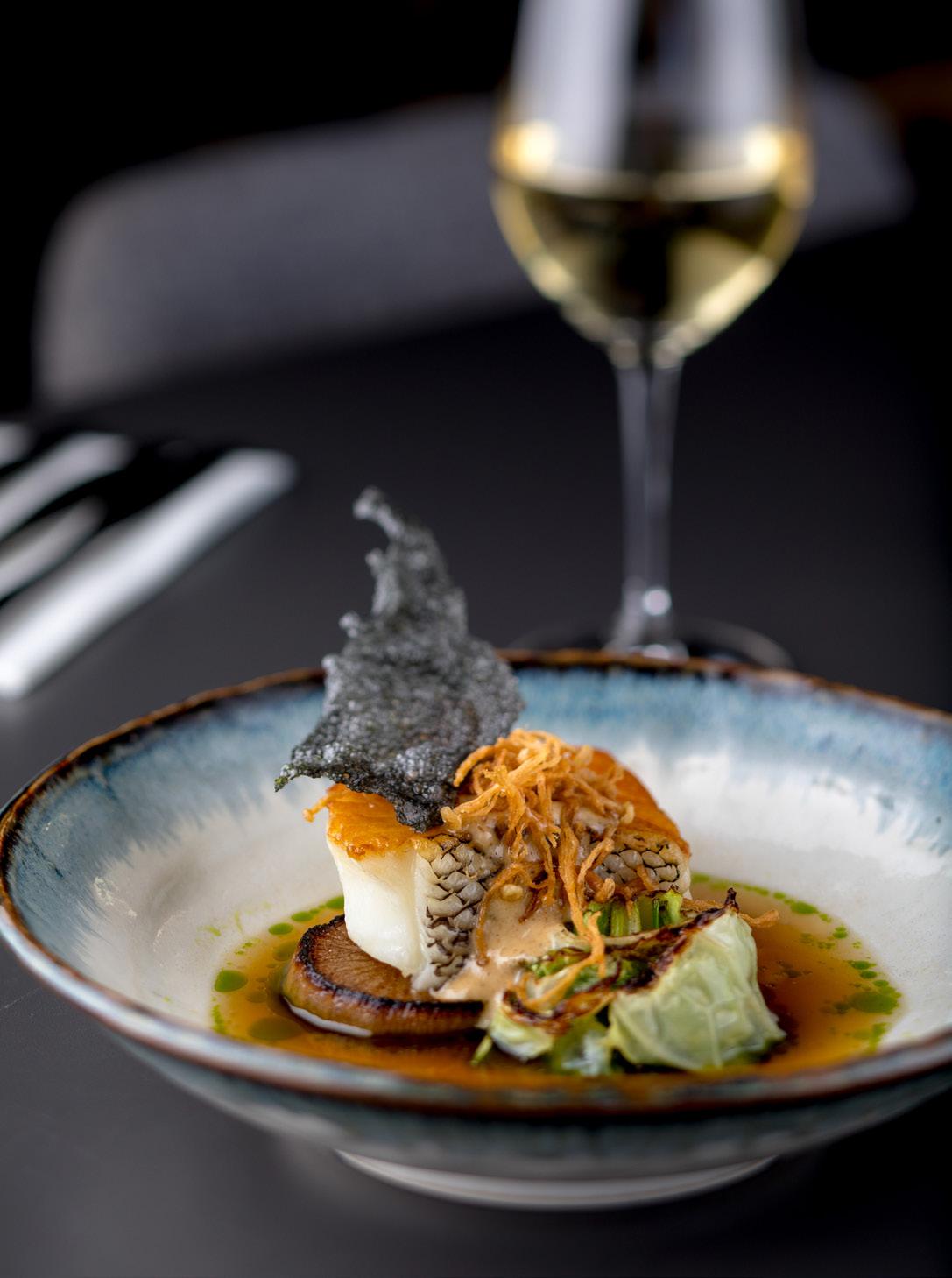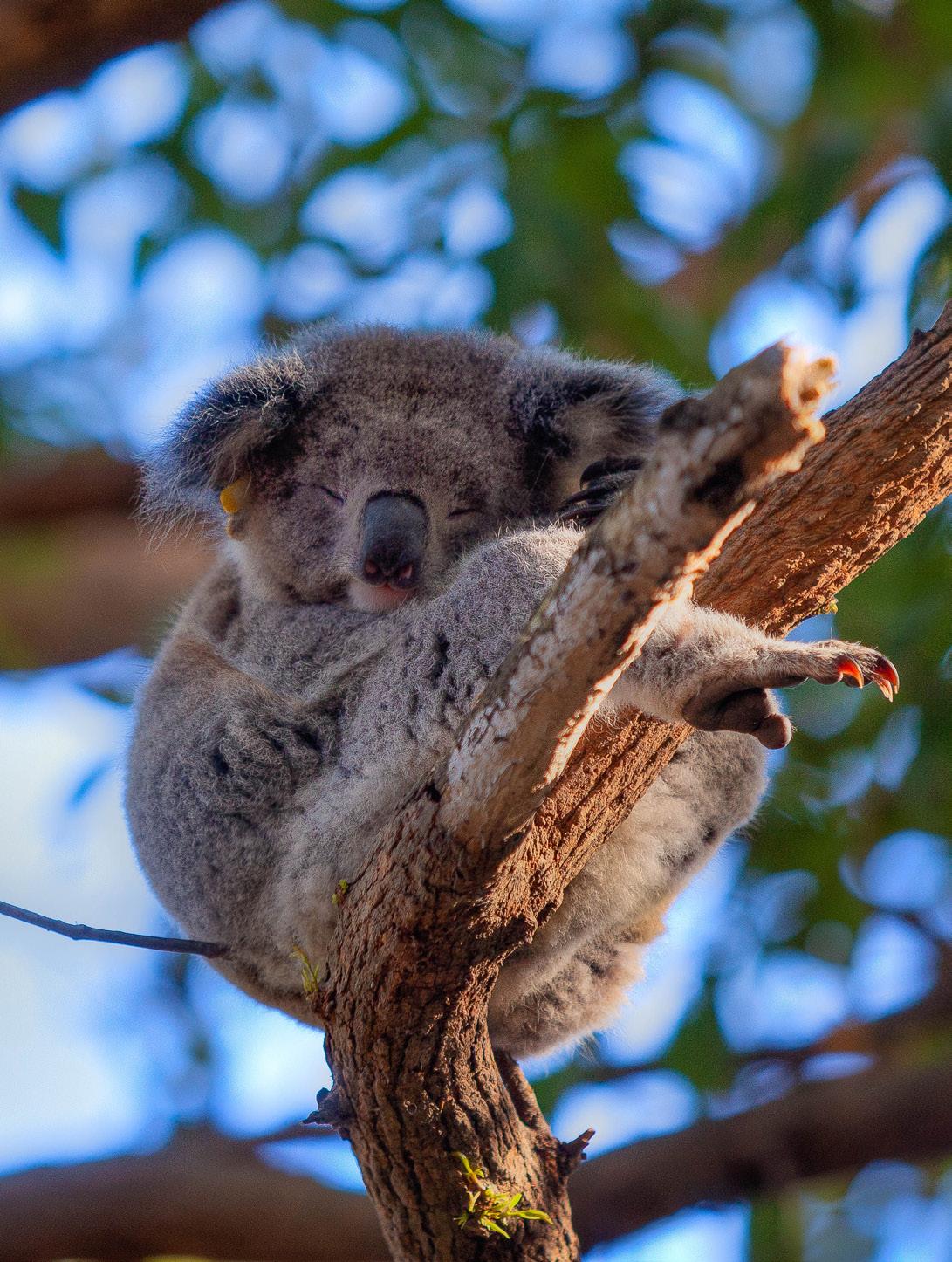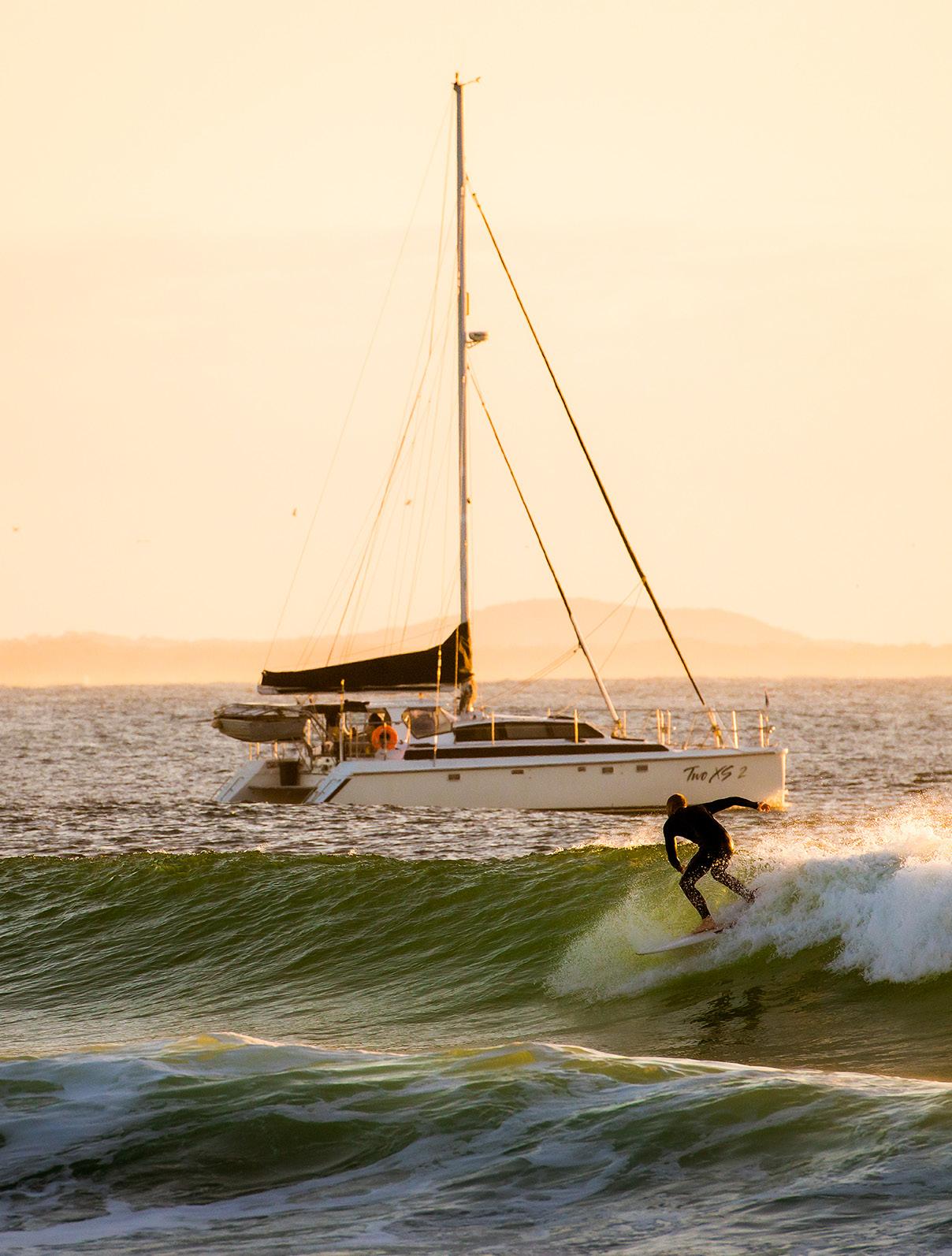View of Port Macquarie, NSW, c.1825, by Augustus Earle, Mitchell Library, State Library of New South Wales
Bicentenary of Port Macquarie
F
or more than 40,000 years the Birpai people have been the original inhabitants and occupants of the Greater Port Macquarie region. Relying on the land and waterways to sustain themselves, the Birpai people made temporary huts along the river and around the lakes allowing them to follow the seasonal food trail. The region’s richly diverse landscapes together with the subtropical climate ensured that the community thrived in harmony with the environment for many thousands of years prior to the arrival of Europeans. Today, with its own unique heritage, Port Macquarie is one of the most popular tourist destinations on the NSW coast, and also one of the fastest growing regions in NSW. Discovered by John Oxley in 1818 and named after the Governor of NSW, Lachlan Macquarie, our first visitors were convicts sent to the Port Macquarie penal settlement in 1821 to serve time for secondary offences. The town was built by those convicts and overseen by military officers of the 48th Regiment. Port Macquarie was opened up to free settlers from 1830 and remained a convict town until 1847. Evidence of our convict past can be viewed at various locations including the convict built St Thomas’ Church, the well of the Female Factory in Munster Street ( Map ref K8), the well of the 1840 gaol located within the Ibis Styles Hotel and at the Port Macquarie Museum. The historic cemetery at the southern end of Horton Street ( Map ref J9) is home to the remains of many of our early settlers including convicts, military officers and free settlers. The Port Macquarie-Hastings region is currently reaching a number of milestones in their European discovery and settlement. 2018 marked two hundred years since Surveyor General John Oxley’s journey of discovery during which he and his party travelled to the place he named Port Macquarie. This year (2021) marks the Bicentenary of the first settlement in Port Macquarie. The Bicentenary is an opportunity for our community and visitors to come together and reflect on our past; our present and our future. A range of activities are planned from 10-18 April 2021 - See pages 6 & 7 for more information. 4
P O R T M ACQ UA R I E M U S E U M An award winning museum featuring themed displays from the first settlers right through to today. Located in Port Macquarie’s CBD, it is one of the few surviving early commercial and residential buildings in Port Macquarie and is listed on the NSW State Heritage Register. Mon-Sat 10am-4pm (minimal charges apply) 22 Clarence Street - Map ref K8 (02) 6583 1108 M I D N O R T H C OA S T M A R I T I M E MUSEUM Originally built as Pilot Cottages in 1896, they now house a wonderful collection of maritime material including superbly built scale models of a variety of vessels, charts, maps, paintings and an extensive collection of historical maritime photos. 7 days 10am–4pm 6 William Street - Map ref M8 (02) 6583 1866 THE HISTORIC COURTHOUSE was designed by colonial architect James Barnet and built in 1869 by local builders Butler and Bourne costing £1,091 and nine shillings. This building, classified by the National Trust, served the community for 117 years and was restored in 1993. Mon-Fri 10am-3pm, and Sat 10am1pm Corner of Clarence & Hay Streets - Map ref K8 (02) 6584 1818 LAKE INNES RUINS Located in Lake Innes Nature Reserve, these ruins represent a significant part of Australia’s colonial heritage. The grand home, Lake Innes House was built in the 1830s and 1840s and was home to the colonial entrepreneur Major Archibald Innes and his wife Margaret Macleay. This historic site is managed by the National Parks and Wildlife Service and public access to the site across private property is via guided tour only.
DISCOVER AUTUMN 2021
Tours can be booked through the Visitor Information Centre 1300 303 155 Map ref D17 ST THOMAS’ ANGLICAN CHURCH Australia’s fifth oldest church is still in use. Built by convict labour between 1824 and 1828 the walls are constructed of one metre thick hand-made brick. It features an 1857 barrel organ that plays 33 hymns – the only one of its type in Australia. Wednesday to Friday, 9.30am 12:00pm. Guided tours currently on hold. 50 Hay Street - Map ref K8 (02) 6584 1033 H I S T O R I C R O T O H O U S E was built in 1891 and belonged to the Flynn family. In the early 1980s it was restored by the National Parks and Wildlife Service and features furnishings and artefacts from the 19th Century. Pack a lunch and picnic in the pleasant surrounds of Macquarie Nature Reserve, or visit the nearby Koala Hospital. daily from 10am-4.30pm subject to volunteer availability 2 Roto Place - Map ref L10 (02) 6584 2180 D O U G L A S VA L E H I S T O R I C H O M E S T E A D + V I N E YA R D is a unique experience within Australia. It has been restored into a museum for eclectic items from the original families. The landscaped grounds include historic buildings plus an orchard, vegetable garden and working vineyard. See page 48 for more details. TIMBERTOWN Step back in time and visit Timbertown in Wauchope - one of Australia's best heritage theme parks. Set amongst 87 acres of beautiful natural Blackbutt forest, Timbertown is an entire living, working recreation of a Timber Getters Village from 1880 - 1930. See page 15 for full details.

